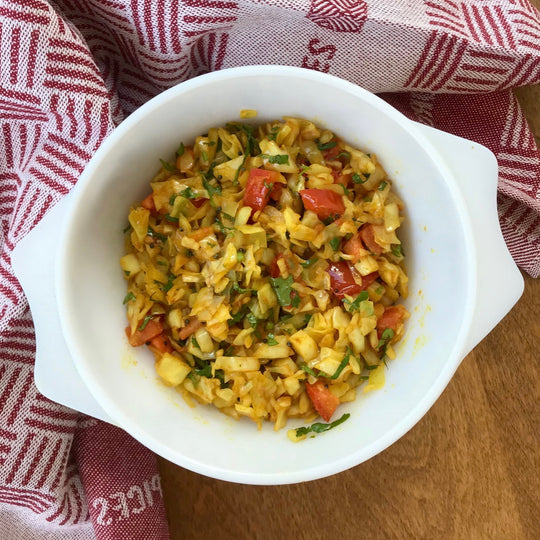We blend our hing with 80% New Harvest Turmeric to prevent caking. We promise, this is way better for your cooking compared to pure hing crystals.
Our Wild Hing, also known as asafoetida, is the dried sap of a mountain shrub, and its flavor is incomparable and essential to many South Indian dishes. The aroma is infamously sharp when raw, but after blooming in a little bit of oil at the beginning of the cooking process, it adds a deep, savory, allium flavor — it's a wonderful alternative to those with a sensitivity to onions and garlic. Those who cook with hing know that a little goes a long way. Start with 1/8 tsp and bloom it in fat at the beginning of the cooking process.
Most hing is blended with rice or wheat flour to prevent caking, but we didn't want to add grain or gluten, so we blended it with our New Harvest Turmeric, which is often used in combination with hing in cooking.
Read more about the long and rich history of hing in this fantastic piece that Vidya Balachander wrote for Whetstone Magazine.
Highlights
Ingredients
New harvest turmeric (Curcuma longa), 80%; wild hing (Ferula asafoetida), 20%
Cooking tips


- Use at the start of cooking any dish that needs a deep allium flavor
- Bloom in fat and sauté greens
- Make a tadka by tempering some hing in ghee, then drizzle the flavored oil over a dish right before serving
SOURCING

Grown in the foothills south of Mazar-e-Sharif, Afghanistan, hing is a native plant that grows wild and is harvested by local foragers. The plant resembles anise, but instead of collecting the seeds, foragers cut the plant at its base with a curved knife and collect the gum-like sap that emerges from the exposed cut. The sap is then placed in containers in a dark room to dry. After drying, the hing forms slightly sticky, resinous pebbles that are ground to a fine consistency.













